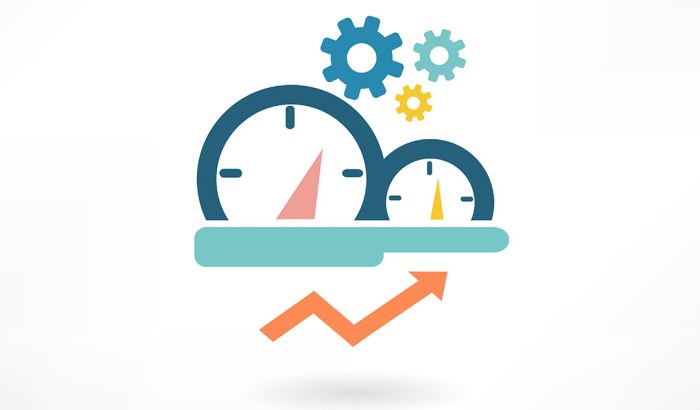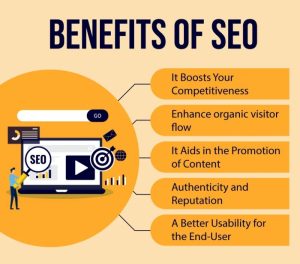
With Website performance optimization at the forefront, get ready to turbocharge your website into a high-speed, user-friendly powerhouse. Uncover the secrets to boost your site’s performance and keep visitors coming back for more!
From the importance of speed to testing and monitoring techniques, this guide will navigate you through the world of website optimization with ease.
Importance of Website Performance Optimization

In today’s fast-paced digital world, optimizing website performance is crucial for providing a seamless user experience. From faster loading times to improved functionality, a well-optimized website can make all the difference in attracting and retaining visitors.Website speed plays a significant role in rankings, with search engines like Google favoring faster websites in their search results. A slow-loading website can negatively impact your search engine ranking, making it harder for potential customers to find you online.One of the most significant benefits of faster loading times is the positive impact on conversions and revenue.
Studies have shown that users are more likely to engage with a website that loads quickly, leading to higher conversion rates and ultimately increased revenue for businesses. By optimizing your website’s performance, you can create a more efficient and enjoyable user experience, driving better results for your business.
Factors Affecting Website Performance

When it comes to website performance, there are several factors that can impact how fast or slow a site loads for users. From large image sizes to the choice of hosting providers, each element plays a crucial role in determining the overall speed and efficiency of a website. Additionally, code optimization is essential for ensuring that the website functions smoothly and quickly.
Let’s explore these factors in more detail below.
Common Factors Affecting Website Speed
- Large Image Sizes: Images that are not optimized for the web can significantly slow down a website’s loading time. It is essential to compress images and use the appropriate file formats to ensure faster loading speeds.
- Excessive Plugins: Having too many plugins on a website can also impact its performance. Each plugin adds additional code that needs to load, potentially causing delays in loading time.
- Unoptimized Code: Poorly written or bloated code can hinder a website’s performance. Optimizing code by removing unnecessary elements, reducing redirects, and minifying CSS and JavaScript files can help improve loading speeds.
Impact of Hosting Providers on Website Performance
- Server Location: The physical location of the hosting server can affect the website’s loading time. Choosing a hosting provider with servers closer to your target audience can help reduce latency and improve speed.
- Server Resources: The resources allocated by the hosting provider, such as CPU, RAM, and bandwidth, can impact the performance of a website. Opting for a hosting plan with sufficient resources is crucial for ensuring a fast and reliable website.
- Uptime and Downtime: The uptime and downtime of a hosting provider can also impact website performance. A hosting provider with high uptime guarantees better accessibility and faster loading times for users.
Role of Code Optimization in Improving Performance
- Minification: Minifying code involves removing unnecessary characters, whitespace, and comments from CSS, JavaScript, and HTML files. This process reduces file sizes and improves loading speeds.
- Caching: Implementing browser caching and server-side caching can help store frequently accessed resources locally, reducing the need to fetch them from the server repeatedly and speeding up page loading.
- Responsive Design: Creating a responsive design that adapts to different screen sizes and devices can enhance user experience and improve website performance. Responsive websites load faster and provide a seamless browsing experience across various platforms.
Techniques for Website Performance Optimization
Website performance optimization is crucial for ensuring a seamless user experience and improving search engine rankings. Here are some techniques to enhance the speed and efficiency of your website:
Importance of Caching Mechanisms
Caching mechanisms play a vital role in reducing load times by storing frequently accessed data locally. This allows the website to retrieve information quickly without having to request it from the server each time a user visits the site.
- Implement browser caching: By setting expiration dates for resources such as images, CSS files, and JavaScript, you can reduce the number of HTTP requests and load times for returning visitors.
- Utilize server-side caching: Use tools like Varnish or Memcached to cache dynamic content on the server, reducing the processing time required for each request.
- Utilize Content Delivery Networks (CDNs): CDNs store copies of your website’s static content on servers located closer to the user, reducing latency and improving load times.
Minimizing HTTP Requests
Reducing the number of HTTP requests made by a webpage is crucial for improving performance. Here are some methods to minimize HTTP requests:
- Combine files: Merge CSS and JavaScript files to reduce the number of requests needed to load a page.
- Sprites: Use CSS sprites to combine multiple images into a single file, reducing the number of requests needed for image loading.
- Avoid unnecessary plugins: Minimize the use of plugins and third-party scripts that require additional HTTP requests.
Benefits of Utilizing Content Delivery Networks (CDNs)
Content Delivery Networks (CDNs) can significantly improve website performance by distributing content across multiple servers worldwide. Some benefits of using CDNs include:
- Improved load times: CDNs reduce latency by serving content from servers closer to the user’s location, resulting in faster load times.
- Scalability: CDNs can handle large amounts of traffic and distribute it efficiently, ensuring a consistent user experience during traffic spikes.
- Enhanced security: CDNs offer additional security features such as DDoS protection and SSL encryption to safeguard your website and user data.
Testing and Monitoring Website Performance
Regular performance testing and monitoring are crucial for ensuring that your website is running at its optimal level. By utilizing tools like Google PageSpeed Insights or GTmetrix, you can gain valuable insights into how your website is performing and identify areas that need improvement.
Significance of Regular Performance Testing
Performing regular performance testing allows you to identify any bottlenecks or issues that may be impacting your website’s speed and overall performance. Tools like Google PageSpeed Insights analyze your website and provide recommendations on how to improve loading times, optimize images, and enhance user experience.
- Regular testing helps in identifying and fixing performance issues before they escalate and affect user experience.
- It ensures that your website is optimized for speed, which is crucial for retaining visitors and improving rankings.
- By monitoring performance metrics, you can track progress over time and measure the impact of optimization efforts.
Monitoring Tools like Google Analytics
Monitoring tools like Google Analytics play a vital role in tracking website performance metrics and gaining insights into user behavior. By analyzing data such as page views, bounce rates, and conversion rates, you can make informed decisions on how to optimize your website for better performance.
- Google Analytics provides valuable data on how users are interacting with your website, allowing you to identify areas for improvement.
- By monitoring key performance indicators, you can track the effectiveness of your optimization strategies and make data-driven decisions.
- Regular monitoring helps in identifying trends and patterns that can guide ongoing optimization efforts.
Best Practices for Ongoing Monitoring and Optimization
To ensure ongoing success in website performance optimization, it’s essential to follow best practices for monitoring and optimization based on performance data.
- Set up regular performance audits and monitoring schedules to track progress and identify new areas for optimization.
- Use A/B testing to compare different versions of your website and determine which performs better in terms of speed and user experience.
- Continuously analyze performance data and user feedback to make informed decisions on further optimization strategies.
WEB DESIGN AND DEVELOPMENT
Responsive design plays a crucial role in creating a user-friendly website by ensuring that the site adapts to different screen sizes and devices. This means that users can have a consistent and optimal experience whether they are accessing the website on a desktop, tablet, or mobile phone.UX/UI considerations are essential in web design for optimal performance as they directly impact how users interact with the site.
User experience (UX) focuses on making the website easy to navigate, intuitive, and enjoyable for visitors. User interface (UI) design involves the visual elements and interactive features that enhance user engagement and satisfaction.
Integrating -Friendly Elements into Web Development
- Include relevant s in the website content to improve search engine visibility and rankings.
- Optimize images by using descriptive file names, alt text, and appropriate sizes to enhance both user experience and .
- Create a logical site structure with clear navigation to help search engines crawl and index the website effectively.
- Ensure fast loading times by optimizing code, compressing images, and utilizing caching techniques to improve performance.
- Implement mobile-friendly design practices to cater to the increasing number of users accessing websites on smartphones and tablets.
MAKING MONEY ONLINE
When it comes to monetizing websites, there are various strategies that can be implemented to generate income and increase revenue streams. A well-optimized website plays a crucial role in attracting visitors and converting them into customers, ultimately leading to higher online earnings.
Affiliate Marketing
A popular monetization strategy for websites is affiliate marketing, where website owners promote products or services from other companies and earn a commission for every sale or lead generated through their referral link.
Selling Products/Services
Another way to make money online is by selling your own products or services through your website. This can include physical products, digital downloads, online courses, consulting services, and more.
Generating Income through Ads
One of the most common ways websites make money is through displaying ads. Website owners can earn revenue by hosting display ads, video ads, or native ads on their site, either through ad networks like Google AdSense or direct partnerships with advertisers.
Sponsored Content
Collaborating with brands to create sponsored content is another profitable avenue for website monetization. This involves featuring sponsored articles, reviews, or videos on your website in exchange for payment from the sponsoring company.
Memberships/Subscriptions
Offering premium memberships or subscription-based services on your website can be a lucrative way to generate recurring revenue. By providing exclusive content, resources, or benefits to paying members, you can create a steady income stream.
DIRECTORY
directories play a crucial role in improving website visibility and creating backlink opportunities. By submitting your website to reputable directories, you can enhance your search engine rankings and attract more traffic to your site.
Submitting to Directories
When submitting your website to directories, follow these best practices to optimize your directory listings and improve your performance:
- Choose reputable directories: Select directories that have a good reputation and are relevant to your industry.
- Optimize your listing: Provide accurate and detailed information about your website, including relevant s and a compelling description.
- Use relevant categories: Make sure to choose the most appropriate category for your website to ensure it reaches the right audience.
- Include backlinks: Add backlinks to your website within the directory listing to drive traffic and improve your search engine rankings.
- Regularly update your listing: Keep your directory listing up to date with fresh content and new information to maintain its relevance.
Final Review
In a nutshell, optimizing your website’s performance is the key to unlocking a seamless user experience and boosting your online presence. By implementing the right strategies and staying on top of monitoring, you can ensure your site is always running at its best speed and efficiency.
Popular Questions
Why is website speed crucial for user experience?
Website speed directly impacts how users perceive your site, affecting bounce rates and overall satisfaction.
How can caching mechanisms improve loading times?
Caching stores frequently accessed data, reducing the need to fetch information from the server, hence speeding up loading times.
What are some common factors that affect website speed?
Large image sizes, excessive plugins, and poor hosting providers can all contribute to slow website performance.




